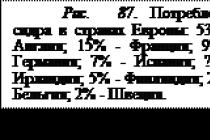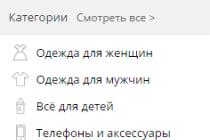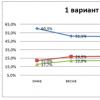Order for medical examinations No. 302n establishes not only the categories of employees who must undergo them, but also the procedure for conducting them. In March 2018, this regulation was amended. What - we will tell.
Read our article:
Order of the Ministry of Health 302n with amendments and additions in 2018
The order approved the rules for passing medical examinations. The list of professions and jobs, upon admission to which the employee undergoes an examination, is determined based on working conditions. It must be compiled by the employer.
If an employee performs work included in the list, he will be required to first undergo this procedure. Annex 2 is a table that is used not only by the employer, but also by the medical institution. Columns 3 to 5 give:
- lists of specialists to be visited;
- a list of studies, both laboratory analyzes and functional measurements;
- additional health contraindications.
It should be noted that if several types of work are performed during production, it is necessary to take into account the need to conduct medical examinations for these types of work at the same time. Example: maintenance and repair of existing electrical installations.
Changes to Order 302n in 2018 were made in March. They affected Appendix 2. The list of workers who are sent for medical examinations was expanded. Instead of workers in social shelters and nursing homes on medical checkup need to send employees of organizations social service providing social services:
- in a stationary form of social service;
- semi-stationary form of social service;
- in the form of social services at home.
Harmful factors for a medical examination by profession in Appendix 1
In the process of work, various production factors constantly or periodically act on the employee.
They can be:
- optimal;
- admissible;
- harmful;
- dangerous.
Such a gradation of factors of the production environment is established. The presence of a production factor of a particular group is determined in the process special evaluation working conditions.
The application concerns only groups 3 and 4 - harmful and dangerous factors.
Under harmful conditions labor is understood as those in which the impact of harmful and (or) dangerous factors exceeds hygienic standards and can lead to varying degrees of damage to health.
The 3rd group is subdivided into 3 subgroups depending on the expected.
Dangerous factors are those that during the working day or shift can lead to a threat to the life of a citizen, and their long-term exposure inevitably leads to acute occupational diseases.
Order 302n on medical examinations does not contain a gradation according to the “harmfulness” of a particular effect. It provides a gradation depending on the acting factor (chemical, biological, physical, labor process). This classification allows you to quickly navigate the list.
The procedure for conducting medical examinations 302n
Medical examinations by profession can be carried out both at employment and in the process of work. Their main purpose is to identify violations in health that prevent the employee from performing work. The procedure is set out in Appendix 3.
Preliminary medical examinations should be carried out even before the candidate leaves for work. In the personnel department of the organization, the future employee is given a referral for a medical examination, while it is possible to pass the MO at the place of residence, and in any medical institution convenient for him.
The cost of passing the medical examination by the applicant must be compensated by the employer.
The direction is drawn up on the letterhead of the organization. It must contain the name of the company, as well as its details. The text of the document itself contains the full name of the candidate, his date of birth, position and division, production factors and types of work in accordance with Annexes 2 and 1. The direction is signed authorized person and the company seal is affixed.
In the clinic, the employee must present a referral, passport, psychiatrist's report and health passport, if available. Health workers make a list of necessary specialists and tests that need to be done. After completion of all procedures, the employee is issued with a medical examination. He is obliged to provide this conclusion to the employer.
Final act on medical examinations 302n (sample)
The final act is issued to the employer at the end of the medical examination as a whole, as established by paragraph 42. It is a summary table for the entire team of the enterprise or part of it.
Download the final act form>>>
The final act contains information about the employer, the number of employees. Based on the results of the examinations, summary tables 1 and 2 are filled in by last name. The employer is given proposals for recreational activities and for. The act is filled in 4 copies.
The completed final act on medical examinations must be kept for 50 years in medical organization who conducted the inspections.
23.04.2013 10:53:00
On January 1, 2012, the order of the Ministry of Health and Social Development of Russia dated April 12, 2011 No. 302n “On Approval of Lists of Harmful and (or) Dangerous production factors and work in the course of which preliminary and periodic medical examinations (examinations) are carried out, and the Procedure for conducting mandatory preliminary and periodic medical examinations (examinations) of workers engaged in hard work and work with harmful and (or) dangerous working conditions ”(hereinafter - Order No. 302n).
One of the main objectives of this document is to create uniform rules for all employers for organizing and conducting mandatory medical examinations by combining requirements that were previously scattered across different documents.
Order No. 302n, as its name implies, approved:
The list of harmful and (or) dangerous production factors, in the presence of which mandatory preliminary and periodic medical examinations (examinations) are carried out (hereinafter - the List of factors);
- a list of works, during the performance of which mandatory preliminary and periodic medical examinations (examinations) of employees are carried out (hereinafter - the List of Works);
- The procedure for conducting mandatory preliminary (when applying for a job) and periodic medical examinations (examinations) of employees engaged in hard work and work with harmful and (or) dangerous working conditions (hereinafter - Procedure No. 302n).
The step-by-step procedure for conducting preliminary and periodic medical examinations described in Order No. 302n is schematically shown in Fig. 12.
Article 213 Labor Code Russian Federation provides for the need to organize medical examinations when an employee comes into contact with production factors only if he is employed in harmful and (or) dangerous working conditions.
Order No. 302n provides for a strict delimitation of the areas of responsibility of the employer, employee and medical organization. Thus, the employer is responsible for:
- assessment of working conditions;
- formation (formation) of groups of workers subject to medical examination;
- sending employees to a medical organization.
The employee is obliged to come to the medical organization with necessary package documents and pass a medical examination. The medical organization is responsible for conducting a high-quality full-fledged medical examination in accordance with the regulatory rules.

According to R 2.2.2006-05 “Guidelines for the hygienic assessment of factors in the working environment and the labor process. Criteria and classification of working conditions ”(approved by Rospotrebnadzor on July 29, 2005) harmful and dangerous classes of working conditions are classes 3 and 4, respectively.
Classes of working conditions 1 and 2, according to the current legislation, are not capable of harming the health of an employee in the near and long term, as well as his offspring.
Therefore, in accordance with paragraph 19 of Procedure No. 302n, note 2 to the List of Factors, the employer is obliged to send the employee for a preliminary or periodic medical examination, and the employee must undergo it if the latter:
Is exposed at the workplace to the impact of production factors classified as harmful and (or) dangerous classes of working conditions (class of working conditions 3.1 and higher);
- performs the work provided for by the List of Works (excluding classes of working conditions).
When concluding an agreement for mandatory medical examinations, the employer (his authorized representative) should take into account legal formalities, namely:
All types of mandatory medical examinations can be carried out by medical organizations of any form of ownership that have the right (license) to conduct preliminary and periodic medical examinations, as well as to examine professional suitability;
- the medical commission should include an occupational pathologist, and "narrow" specialist doctors must have a valid certificate in the specialty "occupational pathology" (issued after passing advanced training in the specialty "occupational pathology" in the prescribed manner);
- the head (deputy head) of a medical organization or its head has the right to head a medical commission structural unit(Order of the Ministry of Health and Social Development of Russia dated 05.05.2012 No. 502n “On approval of the procedure for the creation and activities of the medical commission of a medical organization”). In any case, the person heading the medical commission must have a diploma of an occupational pathologist and a valid certificate of an occupational pathologist.
The employer is responsible for completing the following documents:
List of the contingent (list of jobs) indicating, in accordance with the List of Factors and the List of Works, production factors and types of work identified (performed) at the relevant workplace based on the results of an assessment of working conditions. Based on this document, candidates are determined who are subject to a preliminary medical examination;
- a list of names of employees subject to mandatory periodic medical examination in the current year, which is compiled on the basis of the list of the contingent and sent to the medical organization no later than two months before the agreed start date for the periodic medical examination;
- referral for a preliminary (periodic) medical examination (examination).
There are no requirements for the design (form) of the listed documents. However, Procedure No. 302n determines what information they should contain.
So, in the direction for a preliminary (periodic) medical examination, among other things, the following should be indicated:
Name of position (profession) or type of work;
- harmful and (or) dangerous production factors, as well as the type of work in accordance with the contingent of employees approved by the employer, subject to preliminary (periodic) examinations.
If the referral does not contain or does not fully reflect the mandatory information provided for by Procedure No. 302n, then this may become a formal reason for refusing to conduct a medical examination.
Based on the results of the examination, the medical organization draws up:
Outpatient medical record;
- employee's health passport (if the employee already has a health passport, additional entries are made in it);
- conclusion based on the results of the preliminary (periodic) medical examination (issued to the employee for transfer to the employer after the employee has passed the medical examination);
- the final act based on the results of the periodic medical examination.
It is important to note that in accordance with Procedure No. 302n, the final act can only be approved by a medical organization. The current regulations also determine that the completed final act must be signed by the chairman of the medical commission (and no one else) and certified by the seal of the medical organization. There are no requirements for the mandatory presence of other marks in the final act. Thus, joint work on drawing up the final act should be carried out exclusively until the moment of its approval, that is, at the project stage.

To ensure the continuity of medical examinations, their results are reflected in the outpatient card and health passport of the employee, which is kept in the hands of the latter throughout his life and presented during medical examinations. Order No. 302n defines the procedure for transferring medical records of employees when changing or liquidating a medical organization conducting medical examinations.
SUSPECTED INNOVATIONS IN ORDER No. 302n
During the year after the entry into force of Order No. 302n, the Ministry of Health and Social Development of Russia, and after its division, the Ministry of Health of Russia, as well as the Government of Russia, received numerous appeals from citizens and organizations with comments and suggestions to improve the procedure for conducting mandatory medical examinations. A thorough analysis of these appeals was carried out, as a result of which a list of changes to Order No. 302n was prepared.
At the end of November 2011 came into force the federal law dated November 21, 2011 No. 323-FZ "On the fundamentals of protecting the health of citizens in the Russian Federation" (hereinafter - Law No. 323-FZ), containing norms on medical examinations, examination of professional suitability, formation of medical commissions, etc.
Given the significant number of planned changes in relation to the procedure for conducting mandatory medical examinations, as well as the new requirements of Law No. 323-FZ, a decision was made to issue a new order regulating the procedure for conducting mandatory preliminary and periodic medical examinations (examinations).

The above basic positions of Order No. 302n will remain, the most important of the proposed innovations will be listed below.
1. The obligation of the employer to conclude an agreement for mandatory medical examinations with a medical organization will be more clearly and unambiguously spelled out (with the exception of employers attached to the FMBA of Russia).
2. It is planned to add an extract from the medical record of an outpatient and a military ID (if any) to the list of documents required for submission by an employee.
3. The presence at the workplace of allergenic, carcinogenic or reproductive system factors (in the list of factors they will be marked respectively with the letters A, K, P) will be the basis for a medical examination of the employee, regardless of the class of working conditions due to the possibility of non-threshold effects.
4. The following provisions of Order No. 302n will be seriously revised:
Aerosols of predominantly fibrogenic and mixed type of action (clause 1.1.4 of the List of factors);
- underground work (clause 12 of the List of Works), especially with regard to medical contraindications;
- types of work provided for in paragraphs. 14 - 26 of the List of Works (workers in the food industry, educational institutions, etc.);
- ground control vehicles(clause 27 of the List of Works).
5. New items will be added to the list of works, during the performance of which mandatory preliminary and periodic medical examinations (examinations) of employees are carried out:
Diving operations (six sub-items);
- work on transport management on the subway.
6. The factor "forced eye contact with the video terminal" will be singled out as an independent item with a separately agreed scope of the examination and medical contraindications.
7. In the list of harmful and (or) hazardous production factors, in the presence of which mandatory preliminary and periodic medical examinations (examinations) are carried out, overloading of the vocal apparatus will be added. This is one of the most important innovations of this classifier.
8. The psychiatrist and narcologist will be excluded from the mandatory scope of examinations.
9. An ophthalmologist and ophthalmotonometry will be included in the mandatory list of examinations.
10. Specialist doctors (surgeon, neurologist, otorhinolaryngologist, dermatovenereologist, oncologist, urologist, allergist) can be involved in the work of the medical commission if (on the basis of) medical indications.
11. An examination by an ENT doctor will become mandatory for all workers performing work at height.
12. Pure tone audiometry will remain mandatory only for workers working in noisy environments. In all other cases, acumetry (a study of whispered speech) will be carried out.
13. Fibrogastroduodenoscopy for special workers geographical areas will be marked with a “*” (by indication only).
14. In relation to workers performing work related to exposure to ionizing radiation, as well as a number of chemicals, a psychophysiological study will be carried out.
15. In the event that the frequency of laboratory or functional studies exceeds the frequency of periodic medical examinations, the employer will refer to these studies, and the conclusion on the presence (absence) of medical contraindications will be issued by the chairman of the medical commission together with a specialist doctor corresponding to the profile of the study.
16. Glaucoma of any degree and compensation will be included in the number of medical contraindications for work at height.
17. The presence of an artificial lens will be excluded from the list of medical contraindications for working as a driver.
18. Lack of binocular vision is planned to be added to the number of medical contraindications for working with optical instruments.
19. The degree of color perception impairment, which serves as a contraindication for working as a driver, will be specified - dichromasia and monochromasia.
20. Post-infarction cardiosclerosis will serve as a general medical contraindication for the decreed contingent (i.e., for workers not employed in harmful and (or) dangerous working conditions, but subject to mandatory medical examination) only in the presence of circulatory disorders of the 2nd degree and above.
21. Hearing loss is planned to be excluded from the number of medical contraindications for work in noise conditions and with moving mechanisms for persons who have undergone special training.
22. With regard to such diseases as coronary heart disease, hypertension, discirculatory encephalopathy, etc., appearing as medical contraindications for performing certain types works, references to the degree (stage) of the disease will be added.
23. Occupational disease will be defined as a medical contraindication to work related to exposure harmful factors that called it.
24. Clause 48 of Procedure No. 302n, dedicated to general medical contraindications, will be revised.
25. Drawing up a conclusion based on the results of a periodic medical examination will not be mandatory for all employees, but only for those who have medical contraindications. The medical organization will be obliged to transfer information about this to the employer within three days.
26. After the release of the new order, it is planned to approve guidelines on the organization and conduct of preliminary and periodic medical examinations (examinations), containing forms required documents. In the future, it is planned to develop methods for assessing the risk of development occupational diseases.
27. A separate order of the Ministry of Health of Russia is planned to approve the procedure for medical examination for the right to drive personal vehicles.
A.Yu. Bushmanov,
first deputy CEO FGBU SSC“Federal Medical Biophysical Center. A.I. Burnazyan”FMBA of Russia,Chief Freelance Occupational PathologistFMBA of Russia and Ministry of Health of Russia
A.S. Kretov,
expert-professional pathologist of the Federal State Budgetary Institution SRC “Federal Medical Biophysical Center named after A.I. A.I. Burnazyan” FMBA of Russia, secretary of the profile working group on occupational pathology of the Ministry of Health of Russia
1) Visual acuity with correction below 0.6 in the best eye, below 0.2 - in the worst. Permissible correction for myopia and hyperopia 8.0 D, including contact lenses, astigmatism - 3.0 D (the sum of the sphere and cylinder should not exceed 8.0 D). The difference in the power of the lenses of the two eyes should not exceed 3.0 D.
2) Lack of vision in one eye with visual acuity below 0.8 (without correction) in the other.
3) Central scotoma absolute or relative (with scotoma and the presence of changes in visual function not lower than the values specified in paragraph 1 of this column of the subparagraph - tolerance without restrictions).
4) Condition after refractive operations on the cornea (keratotomy, keratomileusis, keratocoagulation, refractive keratoplasty). Persons are allowed to drive 3 months after surgery with visual acuity with a correction of at least 0.6 in the best eye, not lower than 0.2 in the worst.
5) Permissible correction for myopia and hyperopia 8.0 D, including contact lenses, astigmatism - 3.0 D (the sum of the sphere and the cylinder should not exceed 8.0 D). The difference in the power of the lenses of the two eyes should not exceed 3.0 D, in the absence of complications and the initial (before surgery) refraction - from +8.0 to -8.0 D. If it is impossible to establish preoperative refraction, questions of professional suitability are resolved positively with an eye axis length of 21.5 to 27.0 mm.
6) An artificial lens, at least in one eye. Experienced drivers are allowed with visual acuity with a correction of at least 0.6 in the best eye, not lower than 0.2 in the worst. Permissible correction for myopia and hyperopia 8.0 D, including contact lenses, astigmatism - 3.0 D (the sum of the sphere and cylinder should not exceed 8.0 D). The difference in the power of the lenses of the two eyes should not exceed 3.0 D, a normal field of vision and no complications within six months after surgery.
7) Chronic diseases of the membranes of the eye, accompanied by a significant impairment of the function of vision, persistent changes in the eyelids, including their mucous membranes, paresis of the muscles of the eyelids that impede vision or limit the movement of the eyeball (after surgical treatment with a positive result, admission is carried out individually).
8) Chronic, not amenable to conservative treatment, inflammation of the lacrimal sac, as well as persistent, untreated lacrimation.
9) Paralytic strabismus and other disorders of the friendly movement of the eyes.
10) Persistent diplopia due to strabismus of any etiology.
11) Spontaneous nystagmus when the pupils deviate 70 ° from the average position.
12) Restriction of the field of view by more than 20° in any of the meridians.
13) Violation of color perception.
14) Diseases of the retina and optic nerve (retinitis pigmentosa, optic nerve atrophy, retinal detachment, etc.).
15) Glaucoma.
16) Absence of one upper or lower limb, hand or foot, as well as deformity of the hand or foot, significantly hindering their movement. As an exception, persons with one amputated lower leg may be allowed if the amputation stump is at least 1/3 of the lower leg and the mobility in the knee joint of the amputated limb is fully preserved.
17) Absence of fingers or phalanges, as well as immobility in the interphalangeal joints:
the absence of two phalanges of the thumb on the right or left hand;
absence or immobility of two or more fingers on the right hand or complete reduction of at least one finger;
the absence or immobility of three or more fingers on the left hand or the complete reduction of at least one finger (while maintaining the grasping function and strength of the hand, the issue of access to control is decided individually).
18) Shortening of the lower limb by more than 6 cm - examined can be considered fit if the limb has no defects on the part of bones, soft tissues and joints, the range of motion is preserved, the length of the limb is more than 75 cm (from the calcaneus to the middle of the greater trochanter of the thigh).
19) Absence of an upper limb or hand, absence of a lower limb at any level of the thigh or lower leg in case of impaired mobility in the knee joint.
20) Traumatic deformities and defects of the skull bones with severe neurological symptoms that prevent driving. In the presence of minor neurological symptoms, admission is carried out individually with a re-examination after one year.
21) Complete deafness in one ear (hearing acuity: spoken speech in the other ear is less than 3 m, whispered speech is less than 1 m, or colloquial speech in each ear is less than 2 m (in case of complete deafness, deaf-muteness, admission is carried out with re-examination at least once a year), with the exception of the absence of hearing, severe and severe hearing impairment (deafness and III, IV degree of hearing loss))
22) Chronic unilateral or bilateral purulent inflammation of the middle ear, complicated by cholesteatoma, granulations or polyps (epithympanitis). The presence of a fistula symptom (after surgical treatment with a good result, the issue is resolved individually).
23) Chronic purulent mastoiditis, complications due to mastoidectomy (cyst, fistula).
24) Diseases of any etiology that cause dysfunction of the vestibular analyzer, dizziness syndromes, nystagmus (Ménière's disease, labyrinthitis, vestibular crises of any etiology, etc.).
25) Diseases of the endocrine system of a progressive course with persistent, pronounced dysfunctions of other organs and systems (permission to drive is decided individually, subject to annual re-examination after examination and treatment by an endocrinologist).
26) Ischemic heart disease: unstable angina, exertional angina, grade III FC, high-grade cardiac arrhythmias or a combination of these conditions (permission to drive is decided individually, subject to annual re-examination after examination and treatment by a cardiologist).
27) Hypertensive disease stage III, grade 3, risk IV (permission to drive is decided individually, subject to annual re-examination based on the results of treatment and the recommendations of a cardiologist).
28) Diseases of the bronchopulmonary system with symptoms of respiratory failure or pulmonary heart failure 2-3 tbsp. (Admission to driving is decided individually after examination and treatment by a pulmonologist).
29) Prolapse of the uterus and vagina, retrovaginal and vesico-vaginal fistulas, ruptures of the perineum with violation of the integrity of the rectal sphincters, dropsy of the testicle or spermatic cord, hernia and other diseases that cause restrictions and pain in movements that prevent driving.
;
III. PROCEDURE FOR PERIODIC INSPECTIONS (P.P. 15 - 47);
IV. MEDICAL CONTRAINDICATIONS FOR ADMISSION TO WORK (P.P. 48 - 49);
Preliminary and periodic medical examinations: affordable prices at the "Clinic of Occupational Medicine" in Moscow
An obligatory condition for the interaction between employers and employees is the organization by the enterprise of preliminary and periodic medical examinations for personnel. The difference between these types of professional examination according to the provisions of Order 302n is that a preliminary examination is carried out upon admission to work and can be carried out on an individual basis.
At the same time, periodic medical examinations are aimed at a dynamic study of the health status of personnel, early detection of occupational diseases, as well as symptoms / pathologies that are incompatible with working conditions. This examination may be carried out collectively.
According to the Order of the Ministry of Health and Social Development 302n dated April 12, 2011, periodic examinations must be carried out at least once a year. Moreover, if there are no hazardous production factors at the enterprise, an examination of employees can be organized at any medical institution that has a license to carry out this type of activity.
Order of the Ministry of Health and Social Development of Russia 302n dated April 12, 2011 also determines the procedure for organizing professional examinations at enterprises where harmful and dangerous factors for specialists are observed. The personnel of such companies for at least 5 years must be examined in specialized Occupational Pathology Centers or medical institutions licensed for the examination of aptitude.
The preparation of lists for periodic medical examinations, as well as the approval of their calendar plan, is carried out by the employer together with the medical organization. By contacting our clinic, you can arrange a professional examination at any convenient time at an affordable price.
Registration of a driver's medical certificate and EEG
The procedure for obtaining a driver's license or opening new category changes regularly. However, for some categories, in particular:
- C, C1, CE, C1E;
- D, D1, DE, D1E;
- Tm, Tb,
A prerequisite is the passage of the electroencephalogram of the brain.
If you have a question: “Where can I get a daily EEG in Moscow at an affordable price?” Our clinic offers to sign up for diagnostics. Here you can get fast and inexpensive results of the daily electroencephalogram.
ORDER 302 N dated April 12, 2011 OF THE MINISTRY OF HEALTH AND SOCIAL DEVELOPMENT OF THE RUSSIAN FEDERATION (MINISTRY OF HEALTH AND DEVELOPMENT OF RUSSIA) MOSCOW
"On approval of the lists of harmful and (or) hazardous production factors and work, during the performance of which mandatory preliminary and periodic medical examinations (examinations) are carried out, and the Procedure for conducting mandatory preliminary and periodic medical examinations (examinations) of workers engaged in heavy work and in work with harmful and (or) dangerous working conditions. " with changes from dated May 15, 2013 N 296n.
Published: October 28, 2011 at"RG" - Federal issue No. 5619
Effective: November 8, 2011
Registered with the Ministry of Justice of the Russian Federation on October 21, 2011.Registration N 22111
In accordance with Article 213 of the Labor Code of the Russian Federation (Sobraniye zakonodatelstva Rossiyskoy Federatsii, 2002, N 1 (part 1), art. 3; 2004, N 35, art. 3607; 2006, N 27, art. 2878; 2008, N 30 (part 2), art. 3616) and paragraph 5.2.100.5 5 Regulations on the Ministry of Health and social development of the Russian Federation, approved by Decree of the Government of the Russian Federation of June 30, 2004 N 321 (Collected Legislation of the Russian Federation, 2004, N 28, Art. 2898; 2009, N 3; Art. 378), I order:
1. Approve:
a list of harmful and (or) hazardous production factors, in the presence of which mandatory preliminary and periodic medical examinations (examinations) are carried out, in accordance with Appendix No. 1;
a list of works during the performance of which mandatory preliminary and periodic medical examinations (examinations) of employees are carried out, in accordance with Appendix No. 2;
The procedure for conducting mandatory preliminary (when applying for a job) and periodic medical examinations (examinations) of employees engaged in hard work and work with harmful and (or) dangerous working conditions, in accordance with Appendix No. 3.
2. To put into effect the lists of harmful and (or) hazardous production factors and work, during the performance of which preliminary and periodic medical examinations (examinations) are carried out, and the Procedure for conducting preliminary and periodic medical examinations (examinations) of workers engaged in heavy work and in work with harmful and (or) dangerous working conditions, from January 1, 2012.
order of the Ministry of Health and Medical Industry of the Russian Federation of March 14, 1996 N 90 "On the procedure for conducting preliminary and periodic medical examinations of workers and medical regulations for admission to the profession" (according to the conclusion of the Ministry of Justice of Russia, a document in state registration does not need, letter dated December 30, 1996 N 07-02-1376-96);
order of the Ministry of Health and Social Development of the Russian Federation of August 16, 2004 N 83 "On approval of the lists of harmful and (or) hazardous production factors and work, during the performance of which preliminary and periodic medical examinations (examinations) are carried out, and the procedure for conducting these examinations (examinations)" (registered by the Ministry of Justice of the Russian Federation on September 10, 2004 N 6015);
Order of the Ministry of Health and Social Development of the Russian Federation of May 16, 2005 N 338 "On Amendments to Appendix No. 2 to the Order of the Ministry of Health and Social Development of Russia of August 16, 2004 N 83 "On Approval of Lists of Harmful and (or) Hazardous Production Factors and Works, During the Performance of Which Preliminary and Periodic Medical Examinations (Examinations) are Conducted, and the Procedure for Conducting These Inspections (Examinations)" (registered by the Ministry of Justice of the Russian Federation Federation June 3, 2005 N 6677).
4. Establish that from January 1, 2012, subparagraphs 11, 12 (with the exception of subparagraphs 12.2, 12.11, 12.12), 13 of Appendix No. 2 to the order of the USSR Ministry of Health of September 29, 1989 No. 555 "On improving the system of medical examinations of workers and drivers of individual vehicles" do not apply on the territory of the Russian Federation.
Minister
T. Golikova
ORDER MINISTRIES OF HEALTH OF THE RUSSIAN FEDERATIONdated May 15, 2013 N 296 n
"On amendments to Appendix No. 2 to Order No. 302 n dated April 12, 2011. Ministry of Health and Social Development of the Russian Federation "On approval of the lists of harmful and (or) hazardous production factors and work, during the performance of which mandatory preliminary and periodic medical examinations (examinations) are carried out, and the Procedure for conducting mandatory preliminary and periodic medical examinations (examinations) of workers engaged in heavy work and in work with harmful and (or) dangerous working conditions"
Registered with the Ministry of Justice of Russia on July 3, 2013. Registration N 28970
I order:
Amend Appendix No. 2 to Order No. 302n of April 12, 2011 of the Ministry of Health and Social Development of the Russian Federation "On Approval of Lists of Harmful and (or) Hazardous Production Factors and Works in the Performance of Which Mandatory Preliminary and Periodic Medical Examinations (Examinations) Are Conducted, and the Procedure for Conducting Mandatory Preliminary and Periodic Medical Examinations (Examinations) of Workers Engaged in Hard Work and in Work with Harmful and (or) Dangerous Working Conditions" ( registered by the Ministry of Justice of the Russian Federation on October 21, 2011, registration N 22111) according to the Appendix.
Minister
V.I. Skvortsova
Paragraph 19 shall be stated in the following wording:
|
19. Works in children and adolescents seasonal wellness organizations |
1 time per year |
Dermatovenereologist, Otorhinolaryngologist, *Infectionist |
Fluorography of the lungs |
Diseases and bacterial carriage: |
Application No. 3
to the Order of the Ministry
health and social
development of the Russian Federation
dated April 12, 2011 No. 302 n
PROCEDURE FOR COMPULSORY PRELIMINARY (WHEN ENTRY TO WORK) AND PERIODIC MEDICAL EXAMINATIONS (EXAMINATIONS) FOR EMPLOYEES ENGAGED IN HARD WORK AND WORK WITH HARMFUL AND (OR) DANGEROUS LABOR CONDITIONS
I. General provisions
1. The procedure for conducting mandatory preliminary (upon admission to work) and periodic medical examinations (examinations) of employees engaged in hard work and work with harmful and (or) dangerous working conditions (hereinafter referred to as the Procedure), establishes the rules for conducting mandatory preliminary (upon admission to work) and periodic medical examinations (examinations) of persons employed in heavy work and work with harmful and (or) dangerous working conditions (including underground work), on work related to the movement of transport, as well as work, during which it is mandatory to conduct preliminary and periodic medical examinations (surveys) in order to protect public health, prevent the occurrence and spread of diseases 1 .
2. Mandatory preliminary medical examinations (examinations) upon admission to work (hereinafter referred to as preliminary examinations) are carried out in order to determine the compliance of the health status of a person entering a job with the work assigned to him, as well as for the purpose of early detection and prevention of diseases.
4. Preliminary and periodic examinations are carried out by medical organizations of any form of ownership that have the right to conduct preliminary and periodic examinations, as well as to examine professional suitability in accordance with applicable regulatory legal acts(hereinafter - medical organizations).
5. To conduct a preliminary or periodic examination by a medical organization, a permanent medical commission is formed.
The composition of the medical commission includes an occupational pathologist, as well as medical specialists who have undergone advanced training in the specialty "occupational pathology" in the prescribed manner or who have a valid certificate in the specialty "occupational pathology".
The medical commission is headed by an occupational pathologist.
The composition of the medical commission is approved by order (instruction) of the head of the medical organization.
6. Responsibilities for organizing preliminary and periodic examinations of employees are assigned to the employer 2 .
Responsibility for the quality of preliminary and periodic examinations of employees rests with the medical organization.
II. The procedure for conducting preliminary inspections
7. Preliminary examinations are carried out upon admission to work on the basis of a referral for a medical examination (hereinafter referred to as the referral) issued to the person applying for work by the employer.
8. The direction is filled out on the basis of the list of contingents approved by the employer and it indicates:
- the name of the employer;
- type of medical examination (preliminary or periodic),
- surname, name, patronymic of the person entering the work (employee);
- date of birth of the person entering the work (employee);
- the name of the structural unit of the employer (if any), in which the person entering the work will be employed (the employee is employed);
- the name of the position (profession) or type of work;
- harmful and (or) dangerous production factors, as well as the type of work in accordance with the contingent of employees approved by the employer, subject to preliminary (periodic) inspections.
The direction is signed by an authorized representative of the employer indicating his position, surname, initials.
The direction is issued to the person entering the work (employee), against signature.
The employer (his representative) is obliged to organize the registration of issued referrals.
9. To undergo a preliminary examination, a person entering a job submits the following documents to a medical organization:
- direction;
- passport (or other document of the established form proving his identity);
- employee health passport (if available);
- the decision of the medical commission that conducted the mandatory psychiatric examination (in cases provided for by the legislation of the Russian Federation).
10. For a person undergoing a preliminary examination, the following are issued in a medical organization:
10.1 outpatient medical record (registration form No. 025/u-04, approved by order of the Ministry of Health and Social Development of Russia dated November 22, 2004 No. 255) (registered by the Ministry of Justice of Russia on December 14, 2004 No. 6188) (hereinafter referred to as the medical record), which reflects the conclusions of medical specialists, the results of laboratory and instrumental studies, the conclusion based on the results of preliminary or periodic medical examination.
The medical record is kept in accordance with the established procedure in a medical organization;
- the name of the medical organization, the actual address of its location and the OGRN code;
- last name, first name, patronymic, date of birth, gender, passport data (series, number, issued by whom, date of issue), address of registration at the place of residence (stay), telephone number, number of the compulsory medical insurance policy of the person entering work (employee);
- the name of the employer;
- form of ownership and type economic activity employer according to OKVED;
- the name of the structural unit of the employer (if any), in which the person entering the work will be employed (the employee is employed), the name of the position (profession) or type of work;
- the name of the harmful production factor and (or) type of work (indicating the class and subclass of working conditions) and the length of contact with them;
- the name of the medical organization to which the employee is assigned for permanent monitoring (name, actual location address);
- conclusions of medical specialists who took part in the preliminary or periodic medical examination of the employee, the results of laboratory and instrumental studies, the conclusion on the results of the preliminary or periodic medical examination.
Each health passport is assigned a number and the date it was completed.
One health passport is maintained for each employee.
For persons attached to the FMBA of Russia for medical care, an employee's health passport is not issued.
During the examination, the health passport is kept in a medical organization. Upon completion of the examination, the health passport is issued to the employee in his hands.
If an employee loses a health passport, the medical organization, at the request of the employee, issues a duplicate of the health passport to him.
11. Preliminary examination is completed in case of examination of the person entering the work by all medical specialists, as well as the completion of the full scope of laboratory and functional studies provided for by the List of harmful and (or) hazardous production factors, in the presence of which mandatory preliminary and periodic medical examinations (examinations) of factors are carried out (Appendix No. 1 to the order (hereinafter referred to as the List of factors) and the List of works, during which mandatory preliminary and periodic medical examinations (examinations) are carried out employees (Appendix No. 2 to the order) (hereinafter - the List of Works).
12. At the end of the preliminary examination by a person entering work, a medical organization draws up a conclusion based on the results of a preliminary (periodic) medical examination (hereinafter referred to as the Conclusion).
13. The conclusion states:
- date of issue of the Conclusion;
- surname, name, patronymic, date of birth, gender of the person entering the work (employee);
- the name of the employer;
- the name of the structural unit of the employer (if any), position (profession) or type of work;
- name of the harmful production factor(s) and (or) type of work;
- the result of a medical examination (medical contraindications identified, not identified).
The conclusion is signed by the chairman of the medical commission indicating the surname and initials and certified by the seal of the medical organization that conducted the medical examination.
14. The conclusion is drawn up in two copies, one of which, based on the results of the medical examination, immediately after the completion of the examination, is issued to the person entering the job, or who has completed the periodic medical examination, in his hands, and the second is attached to the medical card of the outpatient.
III. The procedure for conducting periodic inspections
15. The frequency of periodic inspections is determined by the types of harmful and (or) dangerous production factors affecting the employee, or the types of work performed.
16. Periodic inspections are carried out at least within the terms specified in the List of Factors and the List of Works.
17. Employees under the age of 21 undergo periodic examinations annually.
18. Extraordinary medical examinations (examinations) are carried out on the basis of medical recommendations specified in the final act, drawn up in accordance with paragraph 43 of this Procedure.
19. Periodic inspections are carried out on the basis of lists of names developed on the basis of contingents of workers subject to periodic and (or) preliminary inspections (hereinafter - lists of names) indicating harmful (dangerous) production factors, as well as the type of work in accordance with the List of factors and the List of works.
The following employees are subject to inclusion in the contingent lists and name lists:
- exposed to harmful production factors specified in the List of factors, as well as harmful production factors, the presence of which is established by the results of certification of workplaces for working conditions, carried out in the prescribed manner 3 . As a source of information about the presence of harmful production factors in the workplace, in addition to the results of attestation of workplaces for working conditions, the results of laboratory research and tests obtained in the framework of control and supervision activities, industrial laboratory control, as well as the use of operational, technological and other documentation for machines, mechanisms, equipment, raw materials and materials used by the employer in the implementation of production activities;
- performing the work provided for by the List of Works.
20. The list of the contingent of employees subject to preliminary and periodic medical examination shall indicate:
- the name of the profession (position) of the employee according to the staffing table;
- the name of a harmful production factor according to the List of factors, as well as harmful production factors established as a result of attestation of workplaces for working conditions, as a result of laboratory research and tests obtained as part of control and supervision activities, production laboratory control, as well as using operational, technological and other documentation for machines, mechanisms, equipment, raw materials and materials used by the employer in the implementation of production activities.
21. The list of the contingent, developed and approved by the employer, is sent to the territorial body federal body executive power authorized to carry out federal state sanitary and epidemiological supervision at the actual location of the employer.
22. Name lists are compiled on the basis of the approved list of the contingent of employees subject to preliminary and periodic medical examination, which indicates:
- surname, name, patronymic, profession (position) of the employee subject to periodic medical examination;
- the name of the harmful production factor or type of work;
- name of the structural unit of the employer (if any).
23. Name lists are compiled and approved by the employer (his authorized representative) and no later than 2 months before the start date of the periodic examination agreed with the medical organization, they are sent by the employer to the specified medical organization.
24. Before conducting a periodic examination, the employer (his authorized representative) is obliged to hand over to the person sent for a periodic examination a referral for a periodic medical examination, drawn up in accordance with paragraph 8 of this Procedure.
25. The medical organization, within 10 days from the date of receipt of the list of names from the employer (but not later than 14 days before the start date of the periodic inspection agreed with the employer), on the basis of the specified list of names, draws up a calendar plan for conducting a periodic inspection (hereinafter - the calendar plan).
The calendar plan is coordinated by the medical organization with the employer (his representative) and approved by the head of the medical organization.
26. The employer, no later than 10 days before the start date of the periodic examination agreed with the medical organization, is obliged to familiarize the employees subject to periodic examination with calendar plan.
27. The medical commission of a medical organization, on the basis of the hazardous production factors or work indicated in the list of names, determines the need for participation in preliminary and periodic examinations of the relevant specialist doctors, as well as the types and volumes of necessary laboratory and functional studies.
28. To undergo a periodic examination, the employee is obliged to arrive at the medical organization on the day established by the calendar plan and present the documents specified in paragraph 10 of this Procedure at the medical organization.
29. For an employee undergoing a periodic examination, the medical organization draws up the documents established by paragraph 10 of this Procedure (if not available).
30. Periodic examination is completed in case of examination of the employee by all medical specialists, as well as the completion of the full scope of laboratory and functional studies provided for in the List of Factors or the List of Works.
31. Upon completion of the employee's periodic examination by a medical organization, a medical report is issued in the manner prescribed by paragraphs 12 and 13 of this Procedure.
32. Based on the results of the periodic examination in accordance with the established procedure 4, the employee’s belonging to one of the dispensary groups is determined in accordance with the current regulatory legal acts, with subsequent registration in the medical record and health passport of recommendations for the prevention of diseases, including occupational diseases, and if there are medical indications, for further observation, treatment and rehabilitation.
33. Data on the passage of medical examinations are subject to entering into personal medical books and accounting by medical and preventive organizations of the state and municipal systems health care, as well as bodies exercising federal state sanitary and epidemiological supervision.
34. In the event of liquidation or change of a medical organization that performs preliminary or periodic examinations, the medical record is transferred to the occupational pathology center of the constituent entity of the Russian Federation on whose territory it is located or, in cases provided for by the legislation of the Russian Federation, to the occupational pathology centers of the Federal Medical and Biological Agency of Russia, where it is stored for 50 years.
35. The Center for Occupational Pathology, on the basis of a written request from a medical organization with which the employer has concluded an agreement for conducting preliminary and (or) periodic examinations, transfers medical records of employees within 10 days from the date of receipt of the request from the specified medical organization. To request in without fail a copy of the contract for preliminary and (or) periodic inspections is attached.
36. A medical organization with which the employer has not renewed the contract for conducting preliminary and (or) periodic examinations of employees, at the written request of the employer, must transfer, according to the inventory, the medical records of employees to the medical organization, with which the employer currently entered into an agreement.
37. Members emergencies or incidents, workers employed in work with harmful and (or) hazardous substances and production factors with a single or multiple excess of the maximum allowable concentration (MPC) or maximum allowable level (MPL) for the current factor, employees who have (had) a conclusion on a preliminary diagnosis of an occupational disease, persons with persistent consequences of industrial accidents, as well as other employees, if the medical commission makes an appropriate decision, undergo periodic examinations at least once every five years in the centers of occupational pathology and other medical organizations that have the right to conduct preliminary and periodic examinations, to conduct an examination of professional suitability and an examination of the connection of the disease with the profession.
38. If a psychiatrist and (or) narcologist identifies persons with suspicion of having medical contraindications corresponding to the profile of these specialists, to be admitted to work with harmful and (or) dangerous production factors, as well as to work in the course of which it is mandatory to conduct preliminary and periodic medical examinations (examinations) of workers, these persons, in cases provided for by the legislation of the Russian Federation, are sent for examination by a medical commission authorized by the health authority.
39. Occupational pathology centers and other medical organizations that have the right to conduct periodic examinations, to conduct an examination of professional suitability and an examination of the connection of a disease with a profession, when conducting a periodic examination, may involve medical organizations that have the right in accordance with the current regulatory legal acts to conduct preliminary and periodic examinations and an examination of professional suitability.
40. If it is suspected that an employee has an occupational disease during a periodic examination, a medical organization issues a referral to the employee to an occupational pathology center or a specialized medical organization that has the right to conduct an examination of the relationship of the disease with the profession, and also draws up and sends, in the prescribed manner, a notice of the establishment of a preliminary diagnosis of an occupational disease to the territorial body of the federal executive authorities authorized to exercise state control and supervision in the field of ensuring sanitary and epidemiological well-being.
41. In cases where it is difficult to determine the professional suitability of an employee due to a disease he has and for the purpose of examining professional suitability, a medical organization sends an employee to an occupational pathology center or a specialized medical organization that has the right to conduct an examination of the relationship of the disease with the profession and professional suitability, in accordance with the current legislation of the Russian Federation.
42. Based on the results of the examinations, the medical organization, no later than 30 days after the completion of the periodic medical examination, summarizes the results of the periodic examinations of employees and, together with the territorial bodies of the federal executive body authorized to exercise state control and supervision in the field of ensuring the sanitary and epidemiological welfare of the population and representatives of the employer, draws up the final act.
43. The final act states:
- the name of the medical organization that conducted the preliminary examination, the address of its location and the OGRN code;
- date of drawing up the act;
- the name of the employer;
- the total number of employees, including women, employees under the age of 18, employees who have a persistent degree of disability;
- the number of employees engaged in heavy work and work with harmful and (or) dangerous working conditions;
- the number of employees employed in jobs that require periodic medical examinations (examinations) in order to protect public health, prevent the occurrence and spread of diseases, including women, workers under the age of 18, workers who have been diagnosed with a persistent degree of disability;
- the number of employees subject to periodic medical examination, including women, employees under the age of 18, employees who have a persistent degree of disability;
- the number of employees who have undergone a periodic medical examination, including women, employees under the age of 18, employees who have been diagnosed with a persistent degree of disability;
- the percentage of coverage of employees with periodic medical examinations;
- a list of persons who have undergone a periodic medical examination, indicating gender, date of birth, structural unit (if any), conclusion of the medical commission;
- the number of employees who have not completed a periodic medical examination, including women, employees under the age of 18, employees who have been diagnosed with a persistent degree of disability;
- a list of employees who have not completed a periodic medical examination;
- the number of employees who have not undergone a periodic medical examination, including women, employees under the age of 18, employees who have been diagnosed with a persistent degree of disability;
- a list of employees who have not undergone a periodic medical examination;
- the number of employees who do not have medical contraindications to work;
- the number of employees with temporary medical contraindications to work;
- the number of employees with permanent medical contraindications to work;
- the number of employees in need of an additional examination (conclusion not given);
- the number of employees who need to be examined in the center of occupational pathology;
- the number of employees requiring outpatient examination and treatment;
- the number of employees in need of inpatient examination and treatment;
- the number of employees in need of sanatorium treatment;
- the number of employees in need of dispensary observation;
- a list of persons with a preliminary diagnosis of an occupational disease, indicating gender, date of birth; structural subdivision (if any), profession (position), harmful and (or) hazardous production factors and work;
- a list of newly established chronic somatic diseases indicating the class of diseases according to the International Classification of Diseases - 10 (hereinafter - ICD-10);
- a list of newly established occupational diseases with an indication of the class of diseases according to ICD-10;
- the results of the implementation of the recommendations of the previous final act;
- recommendations to the employer on the implementation of a complex of health-improving measures, including preventive and other measures.
44. The final act is approved by the chairman of the medical commission and certified by the seal of the medical organization.
45. The final act is drawn up in four copies, which are sent by the medical organization within 5 working days from the date of approval of the act to the employer, to the occupational pathology center of the subject of the Russian Federation, the territorial body of the federal executive body authorized to exercise state control and supervision in the field of ensuring the sanitary and epidemiological welfare of the population.
One copy of the final act is stored in the medical organization that conducted periodic examinations for 50 years.
46. The Center for Occupational Pathology of a subject of the Russian Federation summarizes and analyzes the results of periodic medical examinations of workers employed in jobs with harmful and (or) dangerous working conditions in the territory of this subject of the Russian Federation, and no later than February 15 of the year following the reporting year, sends summarized information to the Federal Center for Occupational Pathology of the Ministry of Health and Social Development of Russia and to the health management body of this subject of the Russian Federation.
47. The Federal Center for Occupational Pathology of the Ministry of Health and Social Development of Russia, no later than April 1 of the year following the reporting year, submits information on the conduct of periodic examinations of workers employed in work with harmful and (or) dangerous working conditions to the Ministry of Health and Social Development of Russia.
IV. Medical contraindications for admission to work
49. Additional medical contraindications are specified in the List of factors and the List of works.
1 Article 213 of the Labor Code of the Russian Federation.
2 Article 212 of the Labor Code of the Russian Federation.
3 Order of the Ministry of Health and Social Development of Russia dated August 31, 2007 N 569 "On approval of the procedure for attestation of workplaces in terms of working conditions" (registered by the Ministry of Justice of Russia on November 29, 2007 N 10577).
4 Order of the Ministry of Health and Social Development of Russia of 04.02.2010 N 55n (as amended on 03.03.2011) "On the procedure for additional medical examination of working citizens" (together with the "Procedure and volume of additional medical examination of working citizens") (registered by the Ministry of Justice of Russia on 04.03.2010 N 16550).
5 In cases of pronounced forms of mood disorders, neurotic, stress-related, somatoform, behavioral and personality disorders, the issue of professional suitability for the relevant work is decided individually by a commission of specialist doctors corresponding to the profile of the disease, with the participation of a professional pathologist.
6 After the treatment, the issue is resolved individually by a commission of medical specialists, an occupational pathologist, an oncologist.
7 Only for persons working in contact with harmful and (or) dangerous production factors specified in the List of Factors.
APPENDICES TO APPENDIX No. 3 "PROCEDURE FOR CARRYING OUT ..." ORDER No. 302N OF THE MINISTRY OF HEALTH OF RUSSIA DATED 12.04.11
The applications listed below have not been registered with the Ministry of Justice of the Russian Federation and are provided for review. The reliability of the materials is confirmed by their presence in the databases legal documents"Garant" and "Consultant Plus".
| Download: "Appendix No. 1. Referral for a preliminary (periodic) medical examination (examination), form." |














